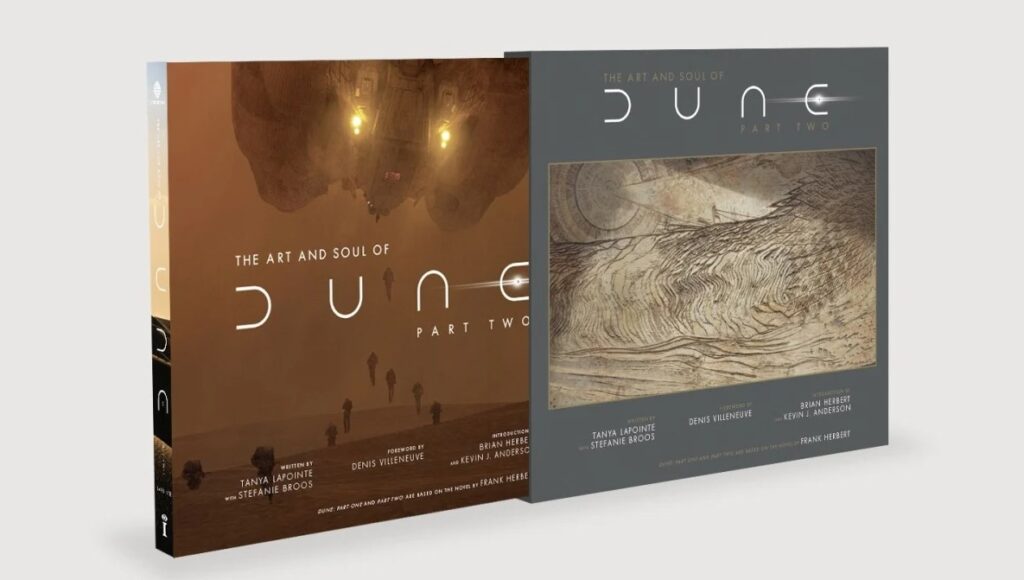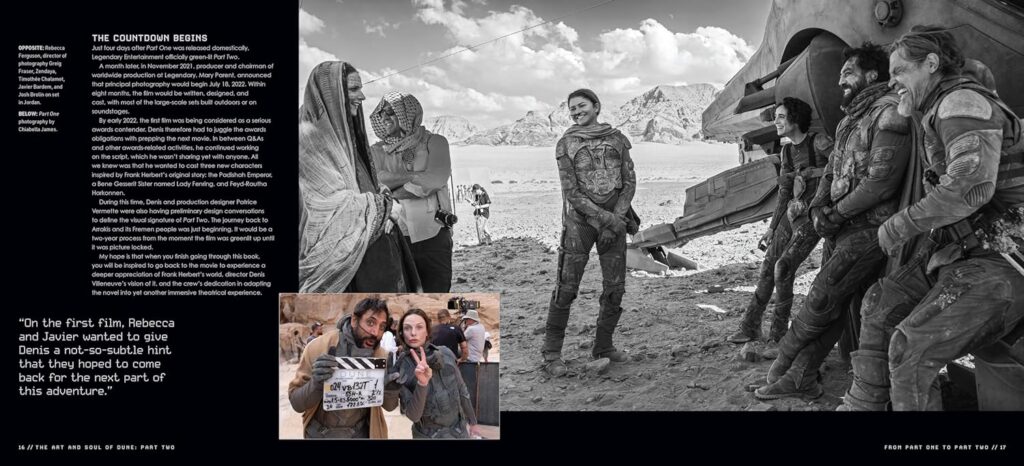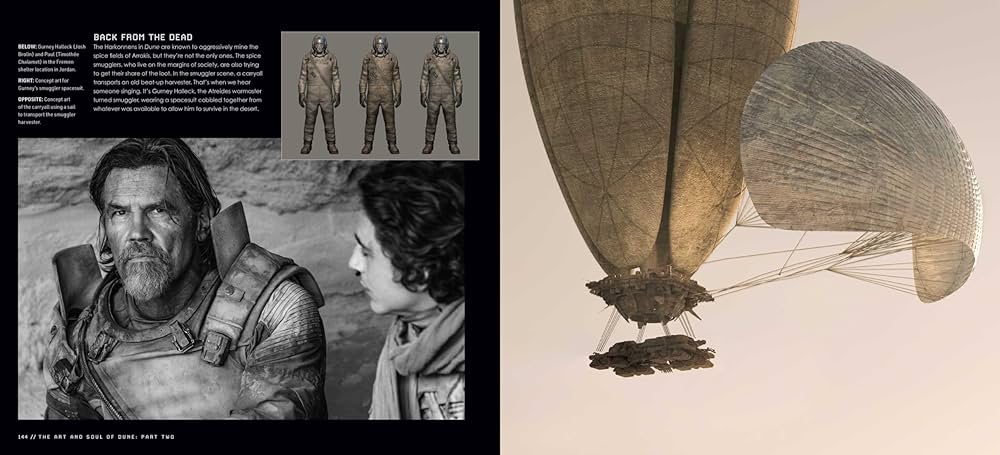
Dune Part Two is so successful in blurring the line between reality and science fiction that you might not want to break the illusion and know how this magic trick of a film was pulled off.
But reading The Art And Soul Of Dune Part Two gives such specific and incisive insight into the design and production work that filmmaking fans and Dune obsessives have to read – you’ll be amazed by how much of the film was done practically.
Supplemented by concept art, on-set photos and crew interviews, the book chronicles the development of Dune Part Two. It starts at the release of the first movie – where Denis Villenueve was writing Dune 2 during the snatches of downtime between awards shows and press work – and moves through the concept phase and onto the nitty gritty of making each set and costume a reality. Even minor elements like Princess Irulan’s voice recorder or Baron Harkkonen’s new breathing apparatus have double pages dedicated to them.
Reading the visual inspirations and production methods gives new appreciation for the work done and the final product. One of the most exciting sections details how they pulled off the spice harvester ambush scene, revealing that most of it was done practically. The helicopters were real and were piloted by the Jordanian military, and their machine guns were physical replicas that bounced and recoiled with every shot. The legs and the underbelly of the harvester were real too– The legs were solid steel lifted by two hundred-ton excavators, and the underbelly was a twenty-ton structure that stunt actors had to crawl under while it was towed by a 330-horsepower tractor.

Every set and sequence is captured here with the same detail; and with so many of the massive structures built, they really did make the Imperium from scratch. The largest of these was the Imperial tent – the giant metal pyramid where the final confrontation happens. The set neared 5,000 square meters and was built in an exhibition hall in Budapest. The walls were fabric painted with a metallic lacquer, which would later be edited in post, and to avoid these walls moving they had to work without air con (Austin Butler publicly complained about how hot some of the sets were).
But despite what would have been an exhausting and challenging production, the book ends on a sweet note. The last sequence filmed, the “martini shot”, was for the vision of Arrakis becoming a paradise once more. The skeleton crew shot the spot where the Namib desert meets the Atlantic ocean and with the close of shooting, “people were weeping and even getting tattoos to commemorate the experience.”

Whilst Dune 2 will undoubtedly get a slew of special featurettes and discussions from the director, The Art And Soul Of Dune Part Two so wonderfully captures the process of making the film that it’s really a documentary feature film of its own. Fans will find it to be an irreplaceable supplement to what is sure to be one of the decade’s best sci-fi films.
![]()
![]()
![]()
![]()
![]()
FIVE STARS (OUT OF FIVE)
The Art And Soul of Dune Part Two by Tanya Lapointe and Stefanie Broos is available now from Insight Editions. Grab yourself a copy from Booktopia HERE.
